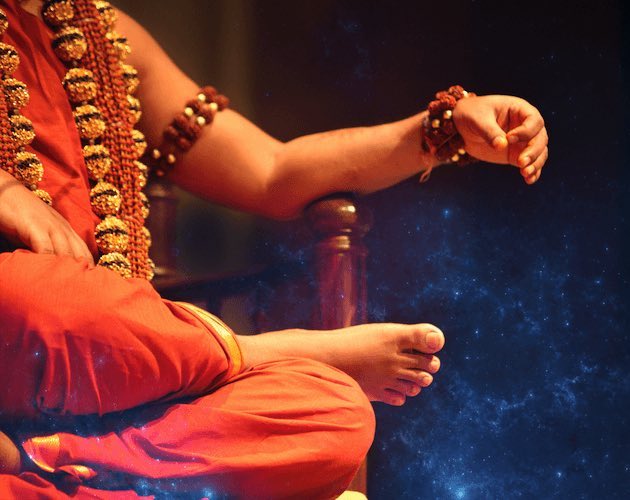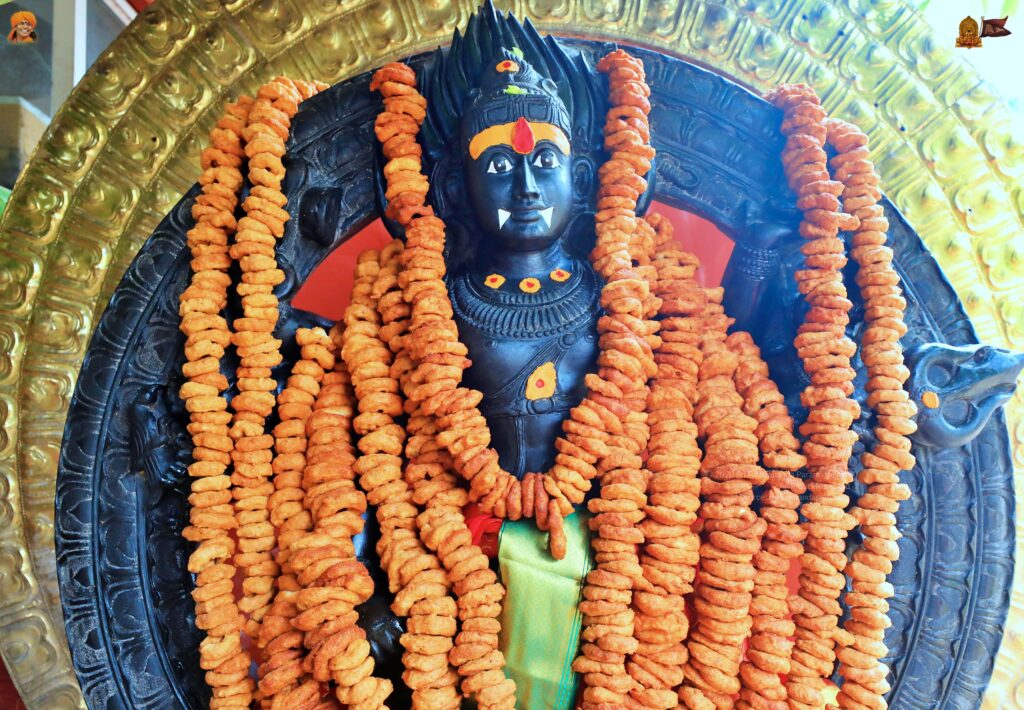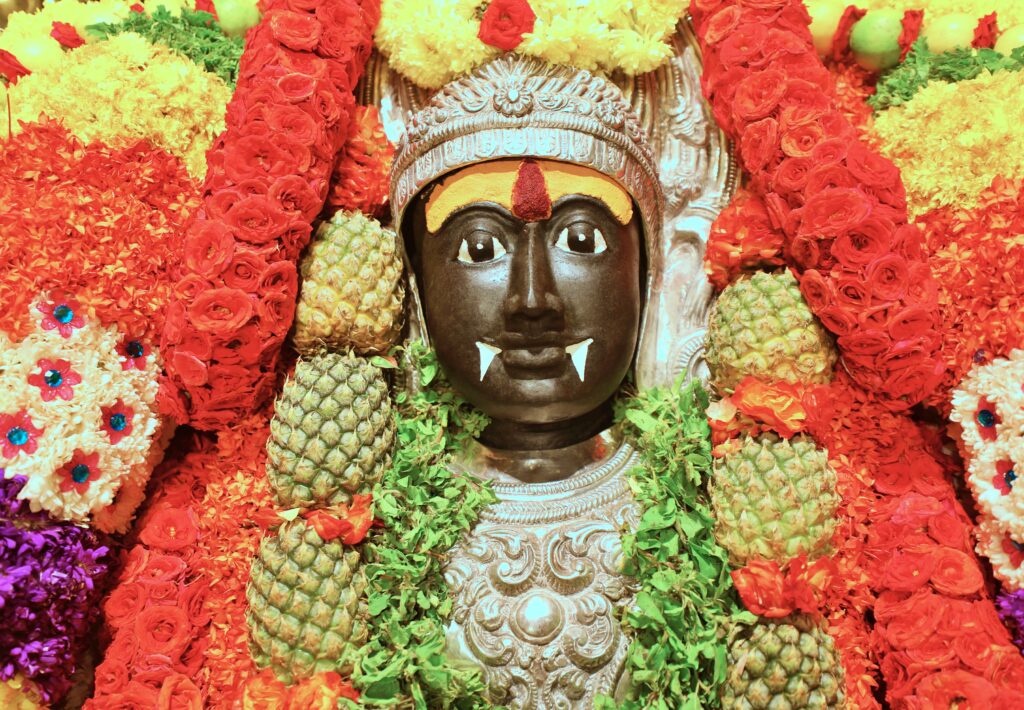This Hindu Compliance System describes the fundamental concepts and principles of quality for making a piece of rudraksha jewelry and the importance of wearing rudraksha jewelry, which is commonly followed for all the śaiva sampradāya in Sanatana Hindu dharma. The Hindu scriptures elaborately talk about the multitude of benefits of wearing rudraksha. Here, we will walk through some of them compiled from various Hindu scriptures.
Omnipresent Lord Siva continued gazing towards the demon Tripural for his annihilation for thousands of years without blinking his eyelids. Tears started dropping from both eyes and fell on the ground, which produced the great Rudraksha trees. The tears dropped into the tree out of mercy for the devotees.
Benefits of Rudraksha
- The result of a glimpse of Rudraksha is a million times more than the effect of donating a cow with the calf to a learned Brahmin who observes the tenets of the scriptures (6).
- A touch of Rudraksa produces a billion times more results, and wearing of Rudraksa is a hundred billion times virtuous to the man (7).
- Devotees who recite mantras wearing the Rudraksha are regarded as endowed with hundreds of millions of times and thousands of millions of times virtues (8).
- Great virtues are bestowed upon the devotee who wears the Rudraksa respectfully. Rudrākṣa of the embolic myrobalan size is considered the best (9).
- The face of the Rudraksa is equivalent to Lord Rudra. All the gods reside on the points of it. The person who wears such Rudrāksas immediately becomes free from all sins (39).
- What can be of equal value to the virtues produced by holding the Rudraksas? God and demons adore the person who has attained the nature of Rudra by wearing the Rudraksha with the proper prescribed procedures (40).
- One who wears thirty-two Rudräksas on the neck, six on each of the ears, 108 on the chest, and forty on the head, has always been adored as the god Rudra (42).
- If one wears only Rudräksa alone, the essence of all gems, without combining it with any precious stones such as pearls, etc., sin cannot touch him as the darkness can never come before the sun (44).
- The hymn produces endless results recited with the help of the garland of Rudraksa. The hymn, recited without the help of Rudraksa, obtains the results as per its number (45).
- The life of the person who does not wear a single Rudräkşa, the producer of immense results, is as fruitless as the non-bearer of the three sacred horizontal lines (Tripundrak) on the forehead (46).
- One who worships Rudraksha by bathing it in water will secure the results of Linga worship (47).
- Immense is the glory of Rudraksa (48).
Various suggested Designs for Rudraksha Garland
- One who wears Rudraksa with pearl, coral, crystal, silver, lapis lazuli (cat’s eye), and gold undoubtedly attains the nature of Rudra (43).
- If one wears only Rudräksa alone, the essence of all gems, without combining it with any precious stones such as pearls, etc., sin cannot touch him as the darkness can never come before the sun (44).
Preferred Quality to be Worn
- Great virtues are bestowed upon the devotee who wears the Rudraksa respectfully. Rudrākṣa the size of embolic myrobalan, is considered to be the best (9).
- The learned people consider Rudrākṣa of the size of the fruit of jujube to be of medium quality and the size of a horse grain is of lower quality, O Brhaspati! know it for sure (10).
- As per the will of Siva, brahman, Kshatriya, vaishya, and Shudra are the four kinds of trees of Rudraksha grown on the earth, and they produce fruits of the same castes (11).
- The white Rudraksas are considered to be Brahmins, red colored are kshatriyas, yellow colored are known as vaisyas, whereas sudras are black (12).
- Brahmins should wear white, Kshatriya red, Vaisyas yellow, and Sudras should wear black Rudraksas (13).
- Rudräkşas that possess the color of copper are sublime; Rudrākşas that are hard, big, and full of granules are considered to be virtuous. On the contrary, the following six types of Rudräksas are forbidden, i.e., eaten by worms, broken, without granules, full of wounds, and unshapely (14).
- The Rudrāksa that naturally possesses the hole (for entering the thread) is considered the best, and Rudraksa, in which the hole has to be drilled by man, is of second quality (15).
- Learned devotees should wear Rudrākṣas of the same round size, glazy and hard by entering the silken thread into them. Generally, all people may wear it (16).
- Rudraksa, whose line on the black stone seems golden, is considered the best quality. Devotees of Siva should put on that Rudrākṣa only (17).
Quantity to be worn
- Brahmins should wear white, Kshatriya red, Vaisyas yellow, and Sudras should wear black Rudraksas (13).
- One should hold one Rudraksa on the knot of the crown of the head, thirty on the head, thirty-two on the neck, and sixteen on each of the arms (18).
- Twelve Rudraksas should be put on the wrist and five hundred on the shoulders. The garland of Rudraksha for the recitation of mantras should consist of one hundred and eight (19).
- One should put on a garland of Rudräksa of two, three, and five rounds (20).
Wearing three hundred, five hundred, and one thousand, Rudraksas are considered to be of the low, medium, and best state, respectively (22). - In the paucity of one thousand Rudraksas, one should wear sixteen in each arm, one in the knot of hair on the crown of the head, and twelve in each hand (41).
- One who wears thirty-two Rudräksas on the neck, six on each of the ears, 108 on the chest, and forty on the head, has always been adored as the god Rudra (42).
Procedure on Wearing Rudraksha
- As per the will of Siva, brahman, Kshatriya, vaishya, and Shudra are the four kinds of trees of Rudraksha grown on the earth, and they produce fruits of the same castes (11).
- The white Rudraksas are considered to be brahmins, red colored are kshatriyas, yellow colored are known as vaisyas, whereas sudras are black (12).
- Brahmins should wear white, Kshatriya red, Vaisyas yellow, and Sudras should wear black Rudraksas (13).
- One should wear Rudräksas in all conditions like sleeping, waking, eating, drinking, etc., on the different parts of the body as an ornament such as headgear, earrings, necklaces, waist belts,s, etc. (21).
- The learned devotees should hold the Rudraksa on the head by reciting the ISäna hymn, on the neck the Tatpuruşa hymn, and on the arms by the Aghora hymn; a garland consisting of fifty beads should be put on the belly by reciting the Vyomvyäpi hymn (23).
- Three, five, or seven lines of garlands of Rudrāksas should be worn by uttering Pañcabrahma hymn- and Şadanga hymn or all the Rudrāksas may be put on by the original hymn, i.e., five-syllable (namah sivaya) (24).



